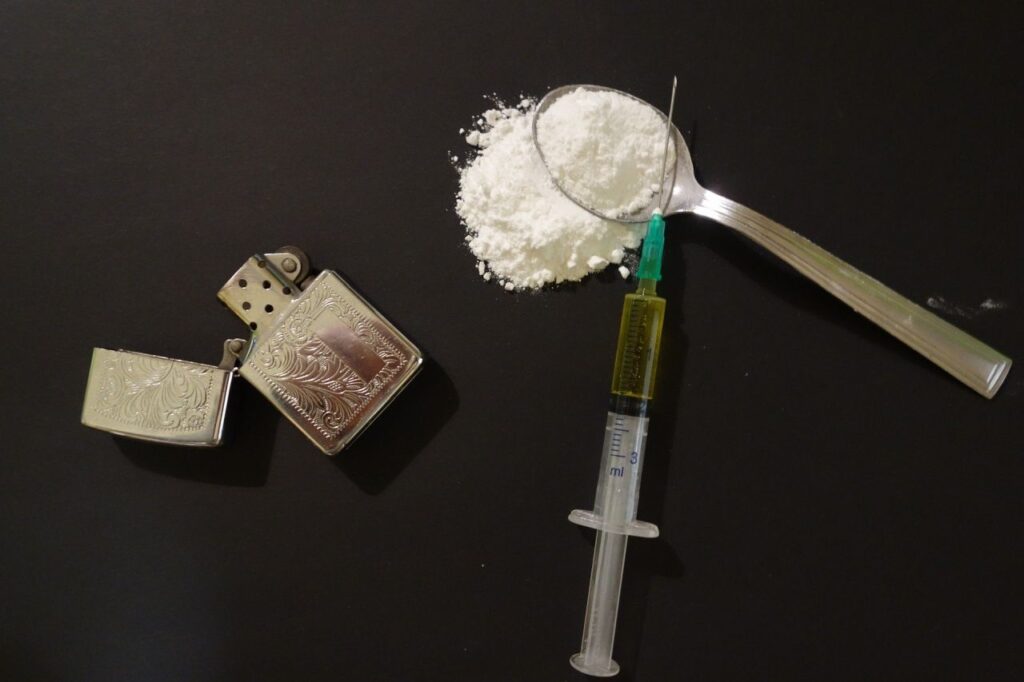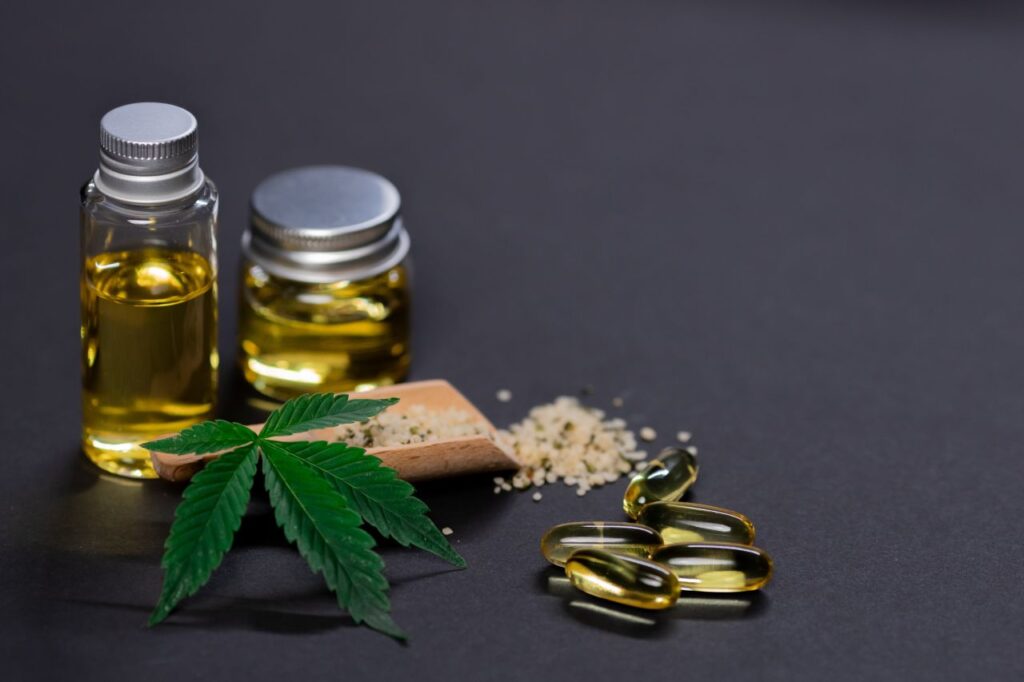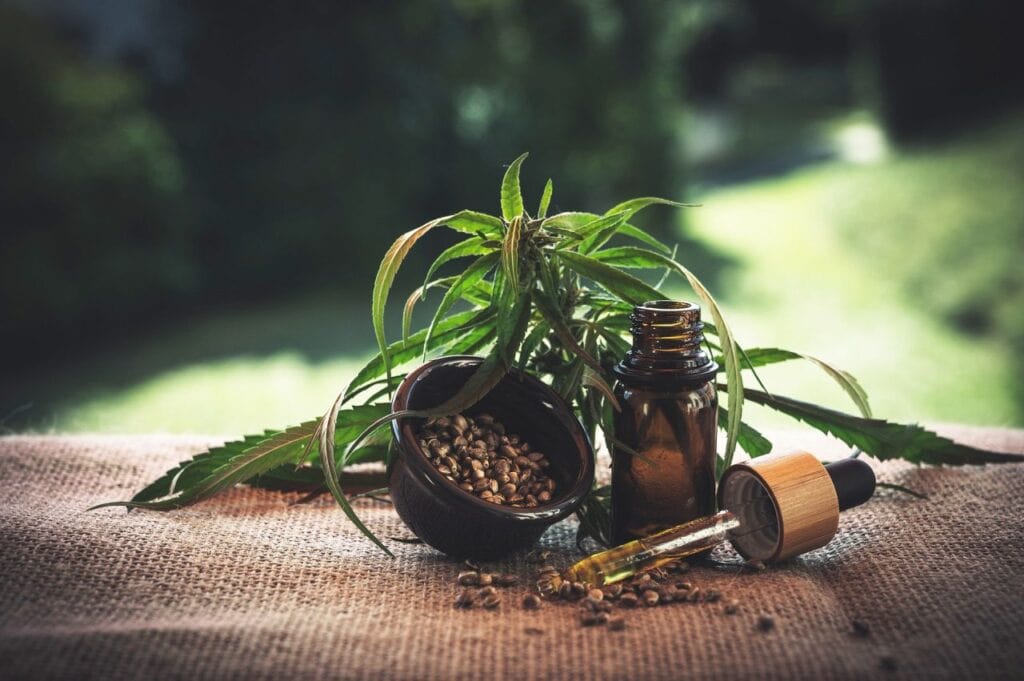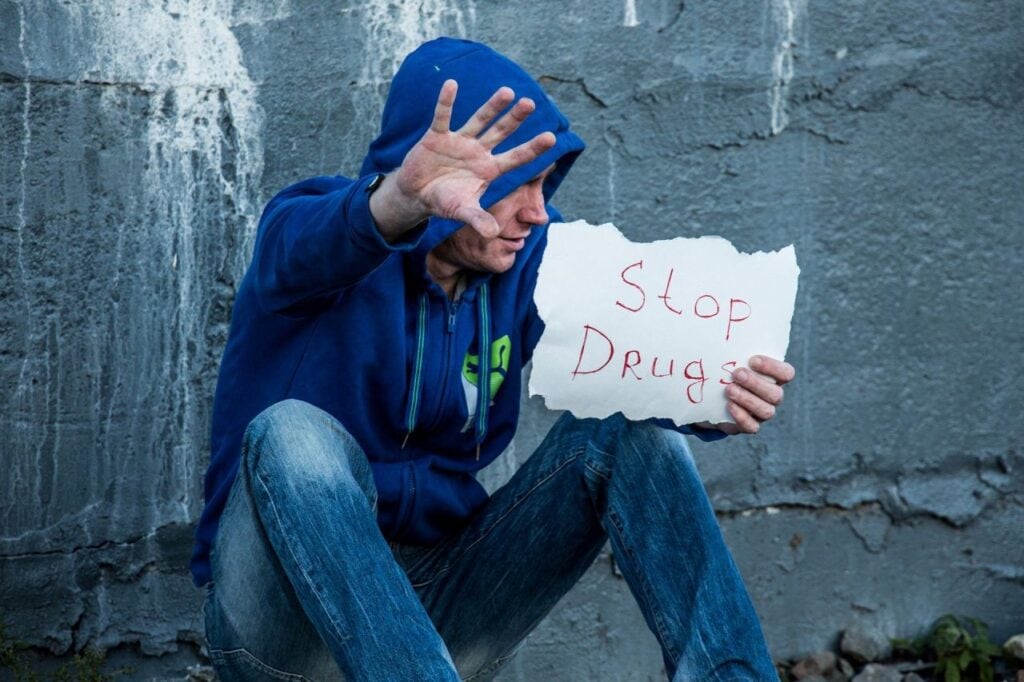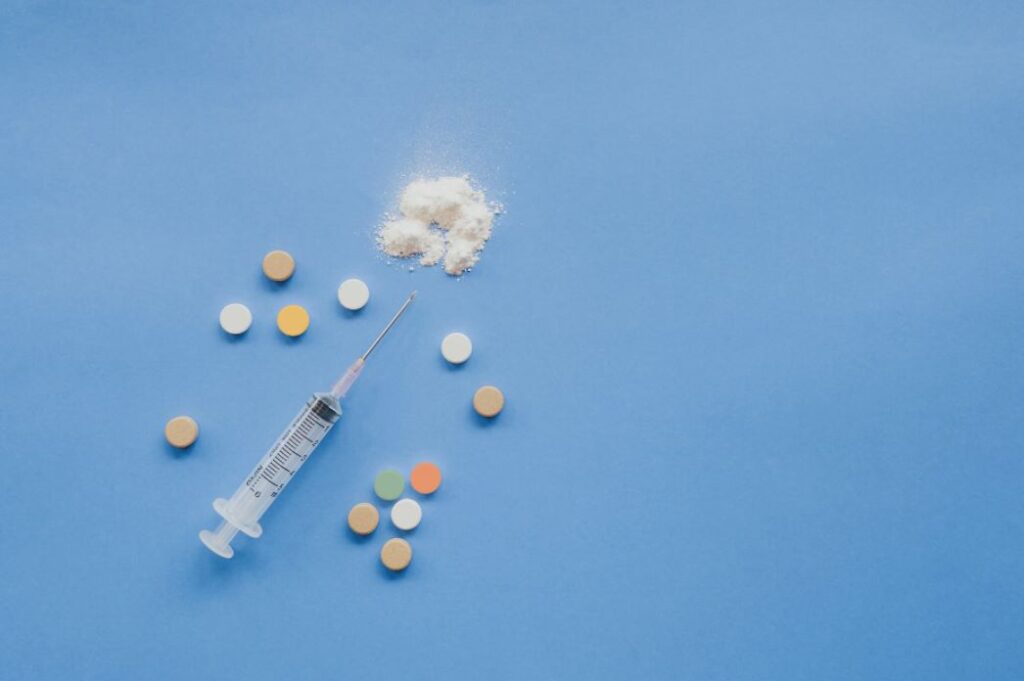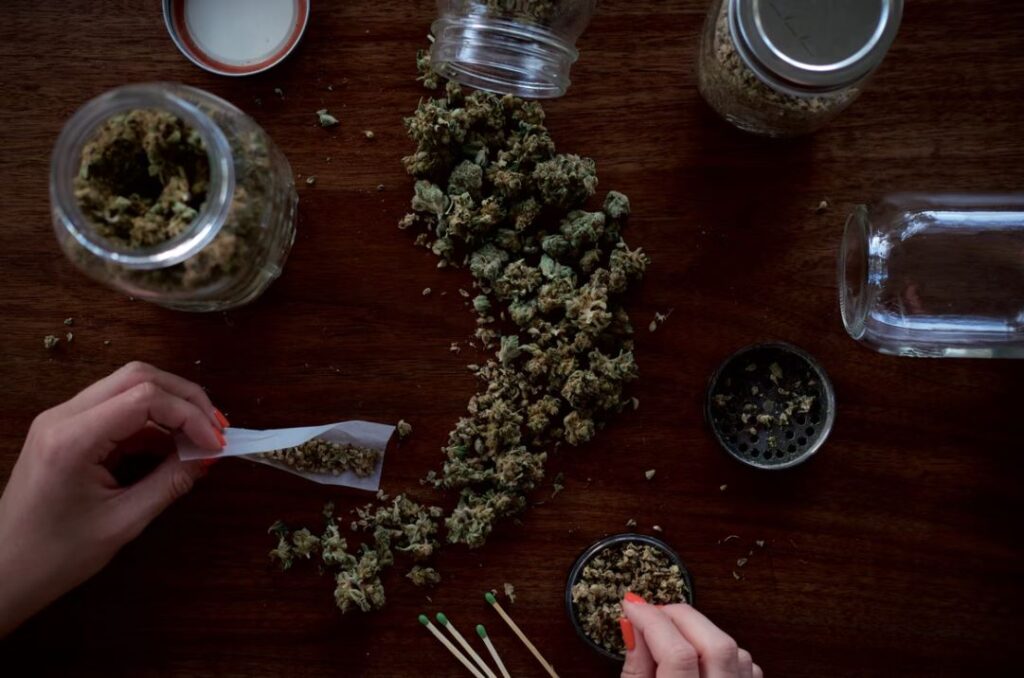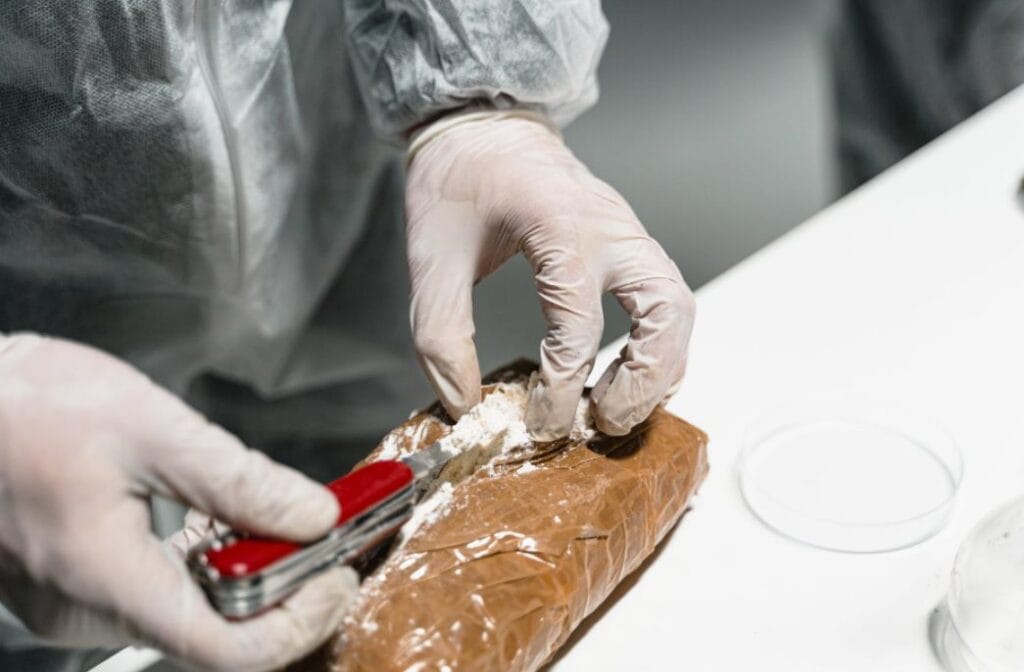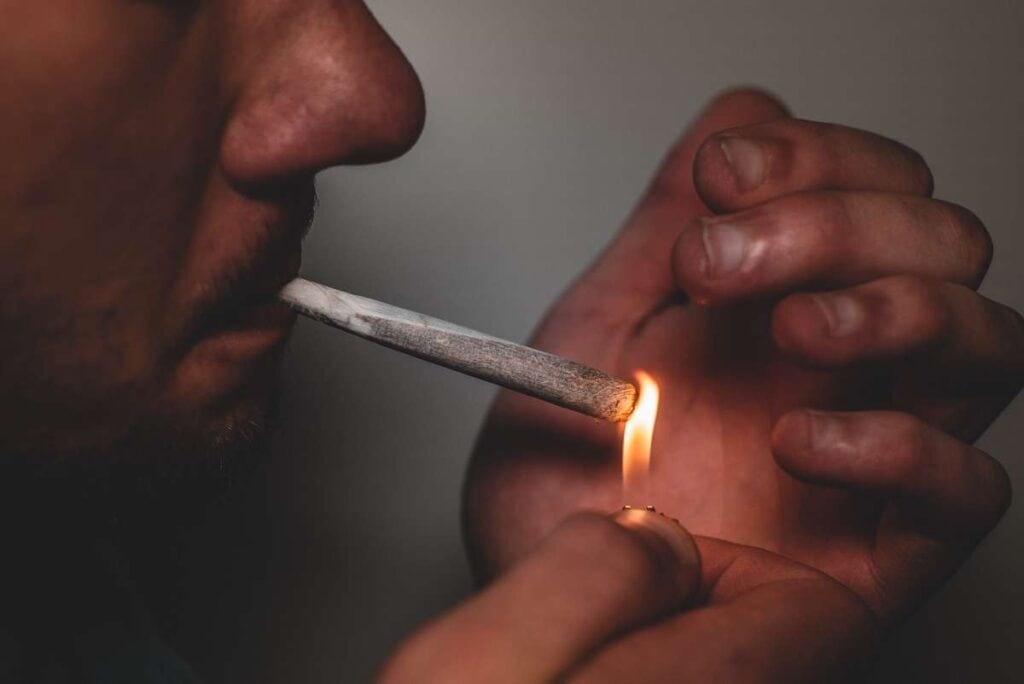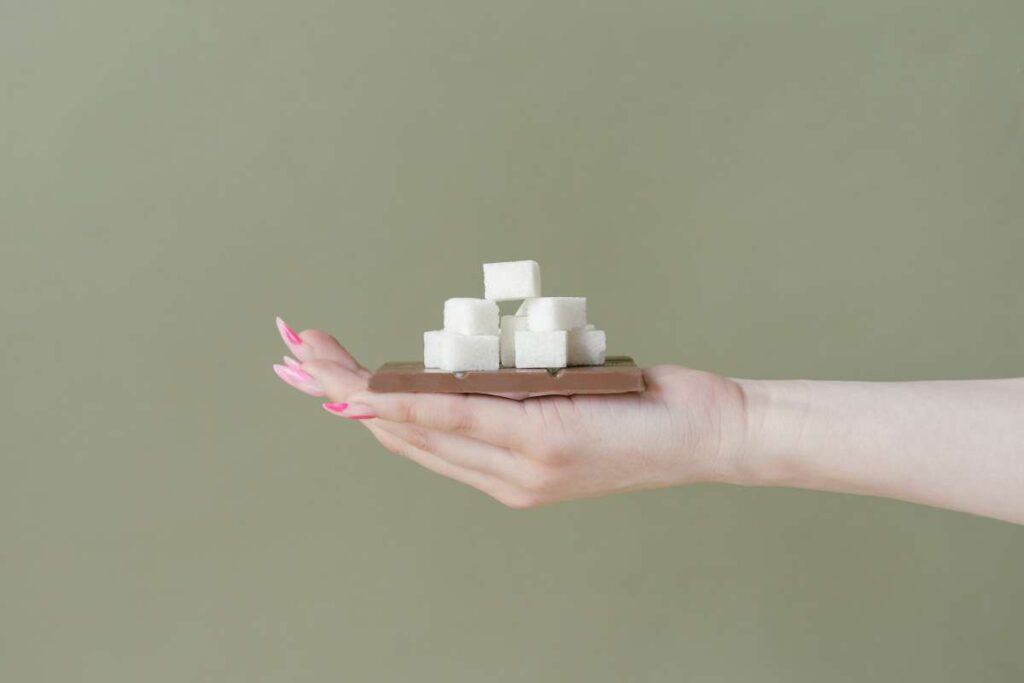It is widespread known that addiction is a problem with potentially devastating effects. But what many people do not get is how addiction originates and how it can be overcome. In order to receive the best effective treatment, it is vital to comprehend the processes that contribute to addiction. This article will detail the numerous pathways that might lead to addiction.
Comprehending the Nature of Addiction
To be addicted to something is to have an excessive need for it, to lose control over how much you use of it, and to continue using it despite its negative repercussions on your life. Addiction affects the brain, hence altering the way the brain processes pleasure and corrupting other fundamental impulses such as learning and motivation. It may be difficult, but it is possible to overcome an addiction.
An addiction is a chronic disorder characterised by compulsive or difficult-to-control substance seeking and use, despite the negative consequences associated with it. The majority of individuals initially decide to explore drugs on their own volition. However, persistent drug use can result in brain alterations that make it difficult for addicts to exhibit self-control and to resist their strong drug cravings. Due to the permanency of these brain changes, drug addiction is referred to as a "relapsing" disease. This suggests that people in recovery from substance use disorders have a greater likelihood of reverting to drug use, even after a period of abstinence.
Relapses are common, although this does not indicate that the treatment was failed. As with other chronic health illnesses, treatment for a chronic health condition should be continuous and modified based on how the patient reacts to treatment. It is vital to periodically evaluate treatment plans and make adjustments to better suit patients' changing needs.
What Are The Causes Of Addiction?
The English word "addiction" is derived from the Latin phrase "enslaved by" or "bound to." Anyone who has struggled to overcome an addiction or assisted another individual in doing so will comprehend why this is the case. Addiction exerts a prolonged and profound influence on the brain, which manifests in three distinct ways.
- a strong craving for the addictive drug
- a lack of control over its application
- Participation that is sustained despite the existence of undesirable consequences.
Only exceptionally potent narcotics like alcohol are capable of generating long-lasting addiction, according to popular belief. Neuroimaging technologies and more recent research have proven, however, that certain pleasant activities, such as gambling, shopping, and sex, can also co-opt the brain. Are you seeking the greatest rehab facility?Then Refocus Rehab Melbourne is the answer.
Substance use disorders and addictions are both challenging conditions to manage, and they can have devastating effects on the individual. The neural circuits responsible for rewards in the brain are involved in the chemical mechanisms that cause addiction. These circuits "reward" substance abusers with surges of positive emotions and chemicals that make them feel good.
The regions of the brain responsible for stress and self-control undergo long-term modifications during the progression of an addiction condition. This contributes to the ongoing difficulties connected with abstaining from the addictive substance.
Frequently Asked Questions About Addiction
When someone has an addiction, their brain needs the high that comes from the substance that caused the addiction. This is because the brain's reward system was extremely stimulated during the experiment.
In response to this, many people who use the chemical continue to do so, which results in a variety of euphoric experiences and odd behavioural characteristics. Addiction that has been sustained over time can have devastating effects, including damage to the brain, and may even lead to death.
An impulse to do something that is difficult to control or quit is what makes up an addiction.
For instance, if you smoke cigarettes, drink alcohol, or use narcotics such as marijuana (weed), cocaine, or heroin, you run the risk of developing an addiction to those substances. They are dangerous to you and may have the potential to take your life.
Having an addiction to something is usually not good for your health. In life, it's important to strike a healthy balance between things by doing them in moderation.
Imaging studies of the brains of persons with addiction have revealed structural alterations in parts of the brain that are essential for critical thinking, decision-making, learning and memory, and the ability to control one's behaviour.
These alterations contribute to an explanation for why addiction is a compulsive disorder. However, there is no one element that can predict whether or not a person would develop a dependency on narcotics.
The inability to exercise self-control or the inability to abstain from a behaviour or drug is a common indicator of addiction. Decreased socialisation, such as forsaking obligations or disregarding relationships; disregard for risk concerns, such as sharing needles despite the potential repercussions; and increased physical effects, such as withdrawal symptoms or the requirement of a higher dosage for the desired result.
These symptoms are frequently related together. On the other hand, the length of time that the addiction has been present may influence the degree of severity that is associated with each indication.
A person who is healthy is typically able to recognise unhealthy behaviours and rid themselves of them. Sadly, this is not the case with someone who is addicted to something. Instead of acknowledging the existence of the issue, they will search for justifications to maintain the behaviour they have been engaging in.
Why Does Addiction Occur?
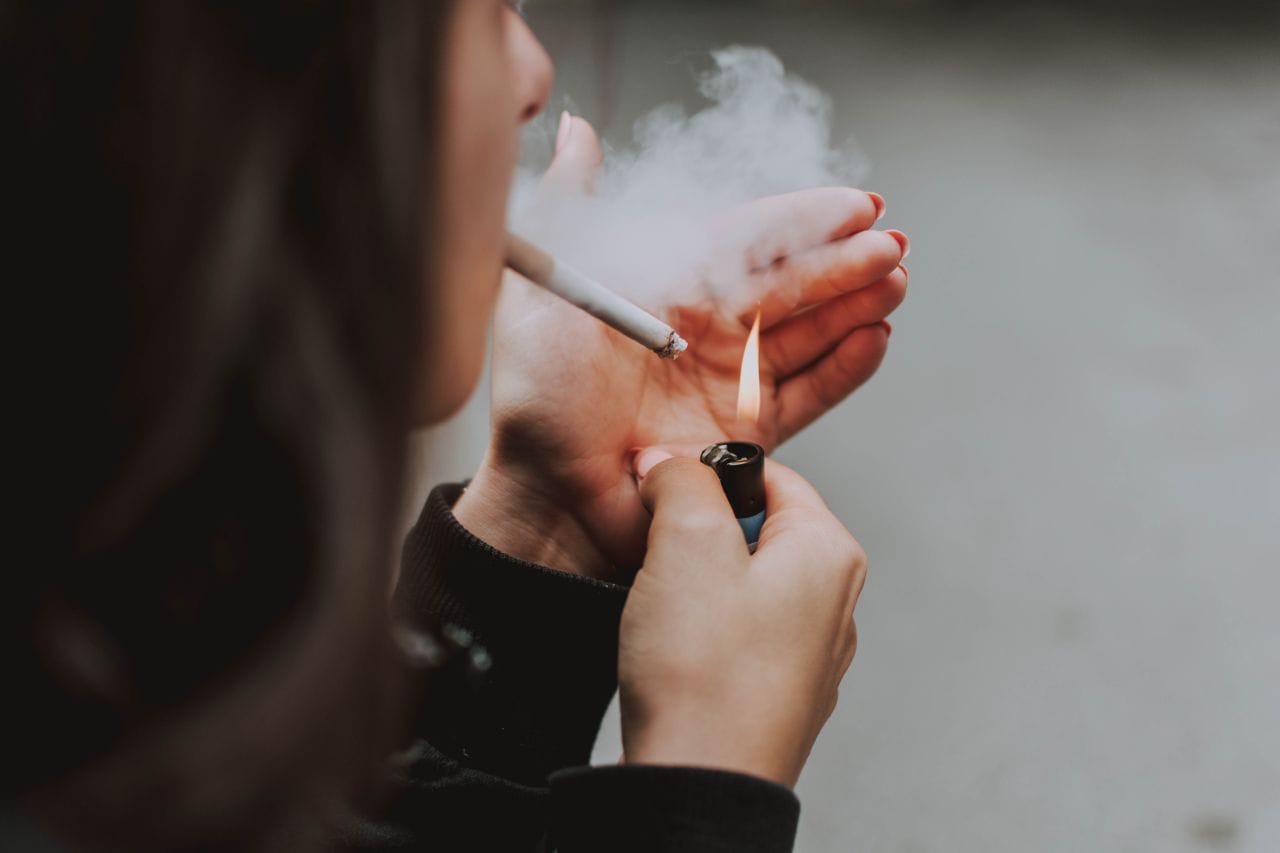
In the initial phases, drug use is typically a voluntary behaviour. On the other hand, a range of factors can affect the development of a full-blown addiction. On the other hand, when a person is addicted to a substance, the brain undergoes changes that might make it extremely difficult to recover to a healthy state. A person whose brain's reward circuitry has not been affected by addiction feels positive emotions towards typically rewarding activities, such as exercising, spending time with family, and eating delicious food. Addiction can also affect the brain's reward pathway. All of these should create a nice experience for the individual.
This may serve as motivation for the individual to continue engaging in these behaviours in order to re-experience the pleasant feeling. When reward-related brain areas are engaged, massive amounts of the neurotransmitter dopamine are produced. When a substance takes control of these circuits and heightens the desire to consume more of the substance to feel the same pleasurable benefits, it can develop to addiction.
A substance use disorder will eventually cease to have the same gratifying benefits if it is not treated. Conversely, if the user entirely abstains from the substance, they will experience withdrawal symptoms, which can be extremely unpleasant.
Frequently, the user feels the need to use the substance in order to feel "normal," which typically involves avoiding the discomfort of withdrawal symptoms. The use of mood-regulating chemicals such as alcohol and opioids can affect the prefrontal cortex, the region of the brain responsible for executive decision-making. Addiction impairs the ability of a specific region of the brain to execute a particular function, which is intended to alert a person about the possibly dangerous consequences of their behaviour.
Due to the interaction between these three mechanisms and the situations that raise the likelihood of developing an addiction, a condition of addiction may arise. The type of substance a person takes is an obvious aspect that can contribute to addiction. Opioids, for example, target brain receptors directly, which adds to their highly addictive character.
Many feel that marijuana is less addictive than other drugs because it contains lesser levels of euphoric compounds, but that it still targets the brain's pleasure and reward regions. However, in order to support these claims, additional study is necessary.
Pleasure Principle
The brain registers all forms of pleasure simultaneously, regardless of whether they are induced by a psychoactive substance, a monetary reward, a sexual experience, or a delicious meal. Dopamine, a neurotransmitter, is secreted by the nucleus accumbens, a cluster of nerve cells beneath the cerebral cortex. This is one of the characteristics of brain pleasure. Because the release of dopamine in the nucleus accumbens is so tightly connected with pleasure, neuroscientists frequently refer to this brain region as the "pleasure centre."
The nucleus accumbens is the site of a very strong boost in dopamine production, and all addictive drugs, from nicotine to heroin, share this impact. The rate at which something stimulates the release of dopamine, the intensity of that release, and the dependability of that release are all strongly related to the probability that anything will lead to addiction when used as a drug or when engaging in a pleasurable activity.
Even taking the same drug in a different dose or by a different route of administration can alter the chance of addiction. As compared to ingesting a tablet, smoking a drug or injecting it intravenously creates a faster and stronger dopamine signal, hence increasing the likelihood of drug misuse. A tablet also offers a faster and more robust signal. By inducing an excessive release of dopamine in the nucleus accumbens, addictive chemicals provide a direct route to the brain's reward system. As a result, the hippocampus preserves memories of this present sense of happiness, while the amygdala creates conditioned responses to certain stimuli.
The Method Of Learning
Researchers once believed that the sheer fact that a person had a pleasurable experience was sufficient motivation for them to continue seeking out addictive substances or activities. However, more recent study reveals that the nature of the issue is more complex. Dopamine, for example, contributes to a person's experience of pleasure. It has an effect on learning and memory, which are two crucial factors in the path from appreciating something to becoming dependent on it.
Dopamine and glutamate, two more neurotransmitters, are believed to operate together, according to the predominant theory of addiction, to take control of the brain's reward-related learning system. This system plays an important role in the preservation of life because it integrates survival-related behaviours (such as eating and sex) with pleasure and reward.
The reward circuit consists of areas responsible for pleasure, motivation, and memory, in that order. Substances and behaviours that are addictive stimulate the same neural circuit, which may then become overloaded.
Repeated exposure to an addictive substance or behaviour leads nerve cells in the nucleus accumbens and the prefrontal cortex (the area of the brain responsible for planning and executing tasks) to communicate, which links loving something with desiring it, which then motivates us to pursue it. Both substances and behaviours are capable of causing addiction. Due to this process, we are compelled to seek out the source of our happiness.
Development Of Tolerance
Over time, the brain is able to adapt in a way that diminishes the initially desired substance's or activity's pleasurable benefits. Getting rewarded in the natural world often needs some time and effort. The brain is flooded with dopamine and other neurotransmitters when an individual consumes addictive substances or engages in addictive behaviours. However, our brains do not have a simple means to resist the assault that is being aimed at them.
For instance, addictive medications can produce two to ten times as much dopamine as natural rewards, and they can do so more promptly and consistently. As a result, the receptors in the brain of a person with a substance use disorder become overloaded. In reaction, the brain either creates less dopamine or removes dopamine receptors, a sort of adaptation akin to dialling down the volume on a loudspeaker when too much noise is present.
See our list of available Rehabilitation Programmes to help you make an informed decision for your treatment.
Due to the aforementioned alterations, the influence of dopamine on the brain's reward centre is reduced. People who battle with addiction usually say that the substance that formerly brought them pleasure no longer does so to the same extent over time. Because their brains have adapted, also known as acquiring tolerance, individuals require a larger dose of dopamine to attain the same "high" as previously.
The Dominance Of Compulsion
At this point, compulsion takes control of the circumstance. The pleasure derived from engaging in an addictive substance or behaviour eventually fades; however, the memory of the intended effect and the urge to experience it again (the craving) remain. It appears that conventional methods of motivation are no longer functioning as expected.
The previously described learning process is also pertinent here. Both the hippocampus and the amygdala are responsible for storing knowledge regarding environmental cues associated with a chemical that must be located again. These memories contribute to the creation of a conditioned response in the form of intense desire whenever the individual is exposed to the relevant environmental stimuli.
In addition to playing a role in the formation of addiction, cravings can contribute to relapse after a period of sustained sobriety. When a heroin addict sees a hypodermic needle, for example, he may be tempted to return to his previous behaviours and begin using again. Conversely, the sight of a bottle of whisky could stimulate another individual to resume drinking. Conditioned learning helps explain why persons who have successfully abstained from an addictive substance for years are nevertheless at danger of relapsing.
What Makes Addiction Grow Worse?

Many individuals' metabolic pathways for metabolising medications are distinct. For certain individuals, for example, it does not take much alcohol for them to reach the point of intoxication. Others appear to be able to consume unusually large quantities of alcohol without showing signs of intoxication.
This is typically associated with a convergence of multiple traits, such as age, gender, and body mass. Consuming a chemical in large quantities on a regular basis may allow the body to become accustomed to the substance's effects and to metabolise it more efficiently. As a result, the user may need to consume a bigger quantity of the item to acquire the same effect as when using a smaller quantity. In the medical world, tolerance is frequently employed to explain this phenomenon.
When tolerance increases concurrently with the desire to continue taking a substance in order to avoid withdrawal symptoms, this is often an indication of the onset of an addictive disorder. It is probable that potentially harmful effects will arise if a person does not receive therapy.
Why Do Some People Develop A Dependency On Drugs While Others Are Able To Avoid This Fate?
There is no single factor that accurately predicts whether an individual will develop a drug addiction. Rather, the chance of addiction is governed by a combination of multiple factors. The greater the number of predisposing features a person exhibits, the greater the likelihood that drug use will result in addiction. Consider, for instance:
- Biology. Approximately fifty percent of a person's susceptibility to addiction is influenced by the genes they receive from their parents. Gender, ethnicity, and the frequency of various mental disorders are also factors that may raise the chance of drug usage and addiction.
- Environment. A person's environment consists of a multitude of effects, including their family, friends, economic standing, and quality of life in general. Peer pressure, physical and sexual abuse, early drug exposure, stress, and parental supervision all have a substantial impact on a person's likelihood of participating in drug use and developing a drug addiction.
- Development. The risk of addiction is determined by a complicated interaction between a person's genes, their environment, and important times of their lifelong development. While substance abuse can result in addiction at any age, there is a correlation between initiating drug use at a younger age and an increased chance of addiction in the future. This provides adolescents with a distinct set of obstacles. Because the regions of their brains that regulate decision-making, judgement, and self-control are still developing, adolescents may be especially prone to engaging in dangerous behaviours such as drug experimentation.
- This blog post will help you make an informed decision about Rehab Treatment Melbourne fees for different treatments.
Is There Any Hope for a Cure or Prevention of Drug Addiction?
Similar to the scenario with other persistent disorders such as diabetes, asthma, and heart disease, drug addiction treatment rarely results in a complete recovery. On the other hand, addiction is treatable, and its symptoms can be handled effectively. People in recovery from addiction run the risk of relapsing into their former behaviours for years, if not their entire lives. Combining medicine with behavioural therapy as part of addiction treatment yields the best results for the majority of individuals, according to study. Continued sobriety is attainable via the use of treatment techniques that are tailored to each patient's drug use history as well as any concurrent medical, mental, or social concerns.
Important Things to Keep in Mind:
- A drug addiction is a chronic disorder characterised by compulsive drug seeking and usage notwithstanding the harmful implications this behaviour may have on one's health.
- The inability to exert self-control and resist intense drug cravings is hindered by the brain changes caused by persistent drug use. Consequently, drug addiction is a disease that generates relapses.
- A person who relapses after attempting to stop using drugs will begin using them again. A relapse indicates the need for additional treatment or a different therapeutic method.
- The bulk of pharmaceuticals function by flooding the brain's reward circuit with dopamine. Dopamine surges within the reward circuit contribute to the reinforcement of enjoyable but harmful behaviours. As a result, individuals tend to participate in these behaviours repeatedly.
- Tolerance refers to the brain's ability to respond to elevated levels of dopamine over time. This results in the individual experiencing a lessened high compared to when they initially began using the medication. They might take more of the medication to achieve the same level of dopamine-induced pleasure.
- There is no single factor that accurately predicts whether a person will develop a drug addiction. The likelihood of having an addiction is impacted by genetic, environmental, and developmental factors. The greater the number of predisposing features a person exhibits, the greater the likelihood that drug use will result in addiction.
- Drug addiction is a treatable disorder that can be effectively cured.
- Both drug use and addiction can be prevented, which is another hopeful information. The responsibility for educating young people, particularly in regards to preventing drug abuse and addiction, lies entirely with parents, educators, and medical experts.
Conclusion
Addiction is a chronic disorder characterised by compulsive or difficult-to-control substance seeking and use. Persistent drug use can result in brain alterations that make it difficult for addicts to exhibit self-control. It may be difficult, but it is possible to overcome an addiction. Substance use disorders and addictions are challenging conditions to manage. Certain pleasant activities, such as gambling, shopping, and sex, can co-opt the brain.
Addiction can also affect the brain's reward pathway, causing surges of positive emotions and chemicals that make users feel good. Mood-regulating chemicals such as alcohol and opioids can affect the prefrontal cortex. Addiction impairs the ability of a specific region of the brain to execute a particular function. Opioids, for example, target brain receptors directly, which adds to their highly addictive character. Even taking the same drug in a different dose or by a different route of administration can alter the chance of addiction.
Dopamine, for example, contributes to a person's experience of pleasure. It has an effect on learning and memory, two crucial factors in the path from appreciating something to becoming dependent on it. Over time, the brain adapts in a way that diminishes the initially desired substance's or activity's pleasurable benefits. The brain either creates less dopamine or removes dopamine receptors, a sort of adaptation akin to dialling down the volume on a loudspeaker when too much noise is present. Cravings can contribute to relapse after a period of sustained sobriety.
When a heroin addict sees a hypodermic needle, for example, he may be tempted to use again. Conditioned learning helps explain why persons who have successfully abstained from an addictive substance are at risk of relapsing. The risk of developing a drug addiction is determined by a person's genes, their environment, and important times of their lifelong development. Peer pressure, physical and sexual abuse, early drug exposure, stress, and parental supervision all have a substantial impact on the likelihood of developing an addiction. A drug addiction is a chronic disorder characterised by compulsive drug seeking and usage notwithstanding the harmful implications this behaviour may have on one's health. Continued sobriety is attainable via the use of treatment techniques that are tailored to each patient's drug use history as well as concurrent medical, mental, or social concerns.
Content Summary
- It is widespread known that addiction is a problem with potentially devastating effects.
- But what many people do not get is how addiction originates and how it can be overcome.
- In order to receive the best effective treatment, it is vital to comprehend the processes that contribute to addiction.
- This article will detail the numerous pathways that might lead to addiction.
- Comprehending the Nature of Addiction To be addicted to something is to have an excessive need for it, to lose control over how much you use of it, and to continue using it despite its negative repercussions on your life.
- It may be difficult, but it is possible to overcome an addiction.
- Due to the permanency of these brain changes, drug addiction is referred to as a "relapsing" disease.
- As with other chronic health illnesses, treatment for a chronic health condition should be continuous and modified based on how the patient reacts to treatment.
- What Are The Causes Of Addiction?The English word "addiction" is derived from the Latin phrase "enslaved by" or "bound to."
- Addiction exerts a prolonged and profound influence on the brain, which manifests in three distinct ways.a strong craving for the addictive druga lack of control over its applicationParticipation that is sustained despite the existence of undesirable consequences.
- Neuroimaging technologies and more recent research have proven, however, that certain pleasant activities, such as gambling, shopping, and sex, can also co-opt the brain.
- Are you seeking the greatest rehab facility?Then Refocus Rehab Melbourne is the answer.
- Substance use disorders and addictions are both challenging conditions to manage, and they can have devastating effects on the individual.
- The neural circuits responsible for rewards in the brain are involved in the chemical mechanisms that cause addiction.
- These circuits "reward" substance abusers with surges of positive emotions and chemicals that make them feel good.
- This contributes to the ongoing difficulties connected with abstaining from the addictive substance.
- Addiction can also affect the brain's reward pathway.
- The use of mood-regulating chemicals such as alcohol and opioids can affect the prefrontal cortex, the region of the brain responsible for executive decision-making.
- Due to the interaction between these three mechanisms and the situations that raise the likelihood of developing an addiction, a condition of addiction may arise.
- The type of substance a person takes is an obvious aspect that can contribute to addiction.
- Many feel that marijuana is less addictive than other drugs because it contains lesser levels of euphoric compounds, but that it still targets the brain's pleasure and reward regions.
- This is one of the characteristics of brain pleasure.
- Because the release of dopamine in the nucleus accumbens is so tightly connected with pleasure, neuroscientists frequently refer to this brain region as the "pleasure centre.
- Even taking the same drug in a different dose or by a different route of administration can alter the chance of addiction.
- As compared to ingesting a tablet, smoking a drug or injecting it intravenously creates a faster and stronger dopamine signal, hence increasing the likelihood of drug misuse.
- By inducing an excessive release of dopamine in the nucleus accumbens, addictive chemicals provide a direct route to the brain's reward system.
- Dopamine, for example, contributes to a person's experience of pleasure.
- Dopamine and glutamate, two more neurotransmitters, are believed to operate together, according to the predominant theory of addiction, to take control of the brain's reward-related learning system.
- This system plays an important role in the preservation of life because it integrates survival-related behaviours (such as eating and sex) with pleasure and reward.
- The reward circuit consists of areas responsible for pleasure, motivation, and memory, in that order.
- Both substances and behaviours are capable of causing addiction.
- Due to this process, we are compelled to seek out the source of our happiness.
- Development Of Tolerance
- Over time, the brain is able to adapt in a way that diminishes the initially desired substance's or activity's pleasurable benefits.
- Getting rewarded in the natural world often needs some time and effort.
- The brain is flooded with dopamine and other neurotransmitters when an individual consumes addictive substances or engages in addictive behaviours.
- For instance, addictive medications can produce two to ten times as much dopamine as natural rewards, and they can do so more promptly and consistently.
- As a result, the receptors in the brain of a person with a substance use disorder become overloaded.
- See our list of available Rehabilitation Programmes to help you make an informed decision for your treatment.
- Due to the aforementioned alterations, the influence of dopamine on the brain's reward centre is reduced.
- People who battle with addiction usually say that the substance that formerly brought them pleasure no longer does so to the same extent over time.
- The Dominance Of CompulsionAt this point, compulsion takes control of the circumstance.
- The pleasure derived from engaging in an addictive substance or behaviour eventually fades; however, the memory of the intended effect and the urge to experience it again (the craving) remain.
- In addition to playing a role in the formation of addiction, cravings can contribute to relapse after a period of sustained sobriety.
- Others appear to be able to consume unusually large quantities of alcohol without showing signs of intoxication.
- Rather, the chance of addiction is governed by a combination of multiple factors.
- The greater the number of predisposing features a person exhibits, the greater the likelihood that drug use will result in addiction.
- Gender, ethnicity, and the frequency of various mental disorders are also factors that may raise the chance of drug usage and addiction.
- Environment.
- A person's environment consists of a multitude of effects, including their family, friends, economic standing, and quality of life in general.
- Peer pressure, physical and sexual abuse, early drug exposure, stress, and parental supervision all have a substantial impact on a person's likelihood of participating in drug use and developing a drug addiction.
- The risk of addiction is determined by a complicated interaction between a person's genes, their environment, and important times of their lifelong development.
- While substance abuse can result in addiction at any age, there is a correlation between initiating drug use at a younger age and an increased chance of addiction in the future.
- This blog post will help you make an informed decision about Rehab Treatment Melbourne fees for different treatments.
- Is There Any Hope for a Cure or Prevention of Drug Addiction?Similar to the scenario with other persistent disorders such as diabetes, asthma, and heart disease, drug addiction treatment rarely results in a complete recovery.
- On the other hand, addiction is treatable, and its symptoms can be handled effectively.
- Combining medicine with behavioural therapy as part of addiction treatment yields the best results for the majority of individuals, according to study.
- Continued sobriety is attainable via the use of treatment techniques that are tailored to each patient's drug use history as well as any concurrent medical, mental, or social concerns.
- Important Things to Keep in Mind:A drug addiction is a chronic disorder characterised by compulsive drug seeking and usage notwithstanding the harmful implications this behaviour may have on one's health.
- Consequently, drug addiction is a disease that generates relapses.
- There is no single factor that accurately predicts whether a person will develop a drug addiction.
- The likelihood of having an addiction is impacted by genetic, environmental, and developmental factors.
- The greater the number of predisposing features a person exhibits, the greater the likelihood that drug use will result in addiction.
- Drug addiction is a treatable disorder that can be effectively cured.
- Both drug use and addiction can be prevented, which is another hopeful information.
- The responsibility for educating young people, particularly in regards to preventing drug abuse and addiction, lies entirely with parents, educators, and medical experts.





